Inspiration & Advice
12 perfect companion planting combos for happy herbs (2025 guide)

The best companions, whether friends or partners, aren’t always just like you. They’re the ones that bring out your best. And the same is true in the world of plants and edibles!
Certain plants thrive when paired with specific buddies. They can boost each other’s growth and flavour, fend off pests or enrich the soil, creating a perfect little ecosystem in your garden beds.
If you’re new to companion planting, herbs are a great place to start. They’re easy to grow, even in small spaces, and can make your garden healthier and your cooking tastier!
Are you ready to dig into some classic herb companion planting combos with Jack? We’ve also got some handy planning and troubleshooting tips to share.
The pros of companion planting herbs
We’ve already touched on some perks of companion planting vegetables and herbs, but let’s get into the real science of why some herbs just seem to thrive when planted side by side.
Better growth
The right companion planting helps herbs flourish by reducing stress, improving access to nutrients, and encouraging natural cooperation both above and below the soil. Here’s how:
- Savvy placement – Companion planting considers roots, shade and space. Shallow-rooted herbs compete for water and nutrients near the surface, stunting growth. Pair them with deeper-rooted herbs for balance underground. Up top, tall plants can shade smaller ones, so layering for light is important. And aggressive growers need their own space so they don’t eat up other varieties.
- Plant chemistry – Some herbs release natural compounds through their roots or leaves—a process called allelopathy. It’s their way of ‘talking’ to the neighbours! Sometimes it’s a friendly nudge that can boost the oil production of nearby herbs. Other times, it’s more of a cold shoulder, which can stunt the growth of anything planted too close.
Yummier flavour
When planted in the right combos, many fragrant herbs actually produce stronger aromas and a more intense punch in every bite.
That’s thanks to mild competitive stress and chemical signalling between nearby plants, which can encourage herbs to concentrate their essential oils (what gives them their smell and taste).
Natural pest control
Many herbs have a great ability to repel pesky pests, but they can also benefit from being near other pest-fighting plants.
It comes down to volatile organic compounds (VOCs), also known as aromatic chemicals, which some herbs release into the air. These act like natural insect repellents or invisibility cloaks, making it harder for bugs to locate their target!
Perkier pollination
When herbs bloom, they attract all sorts of pollinators: bees, butterflies and other plant-hopping insects.
Planting a variety of herbs close together creates a buzzing hotspot that helps plants get pollinated faster and more effectively. And more pollination means more healthy herbs and vegies for your kitchen!
12 perfect herb pairings – and why they work
Here are 12 herb pairings that make a great team in the garden (and on your plate!). The benefits of companion planting can go both ways. Why not print this section out and use it as a handy companion planting chart?
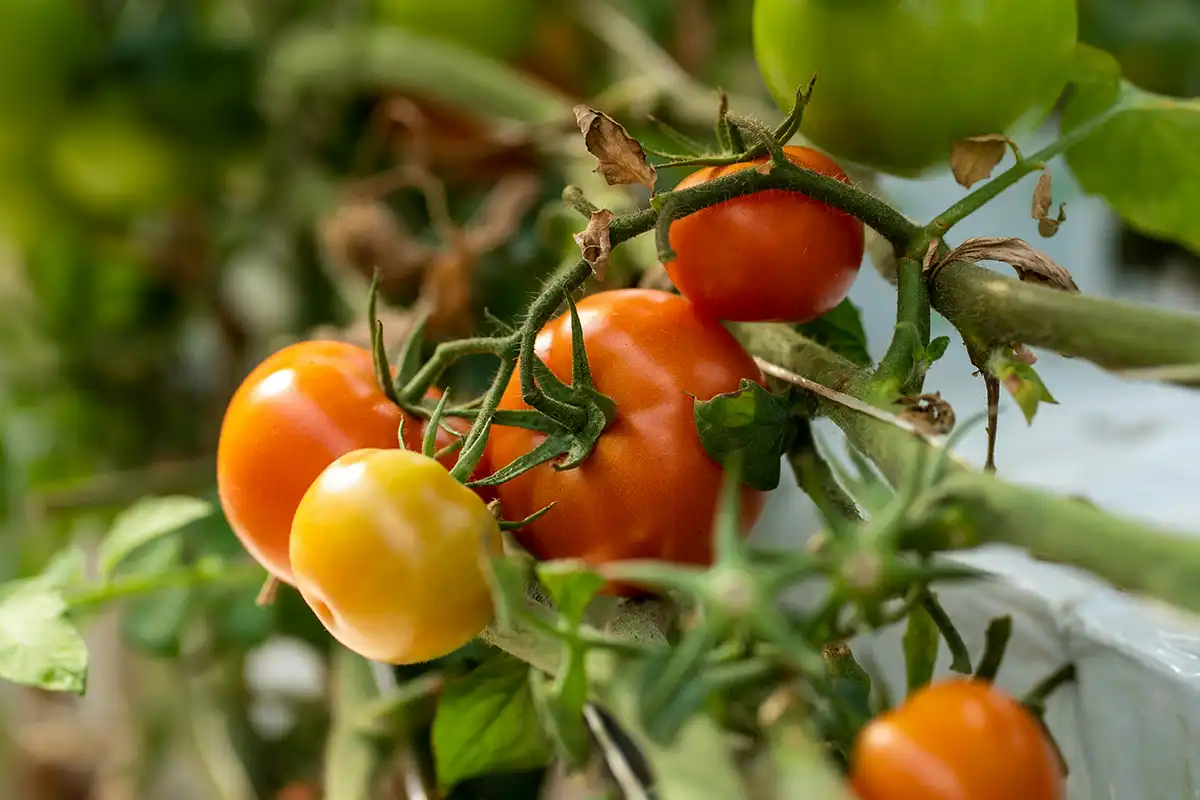
1. Basil and tomato plants
- How basil helps tomatoes: Basil keeps pesky aphids and whiteflies at bay. Plus, it might even give your toms a flavour boost.
- How tomatoes help basil: Toms return the favour by giving basil some cool dappled shade in summer, helping it avoid bolting and heat stress.
Spacing: Give basil a comfy 20–30 cm from each tomato’s base. Close enough to be mates, but with plenty of airflow to keep mildew away.
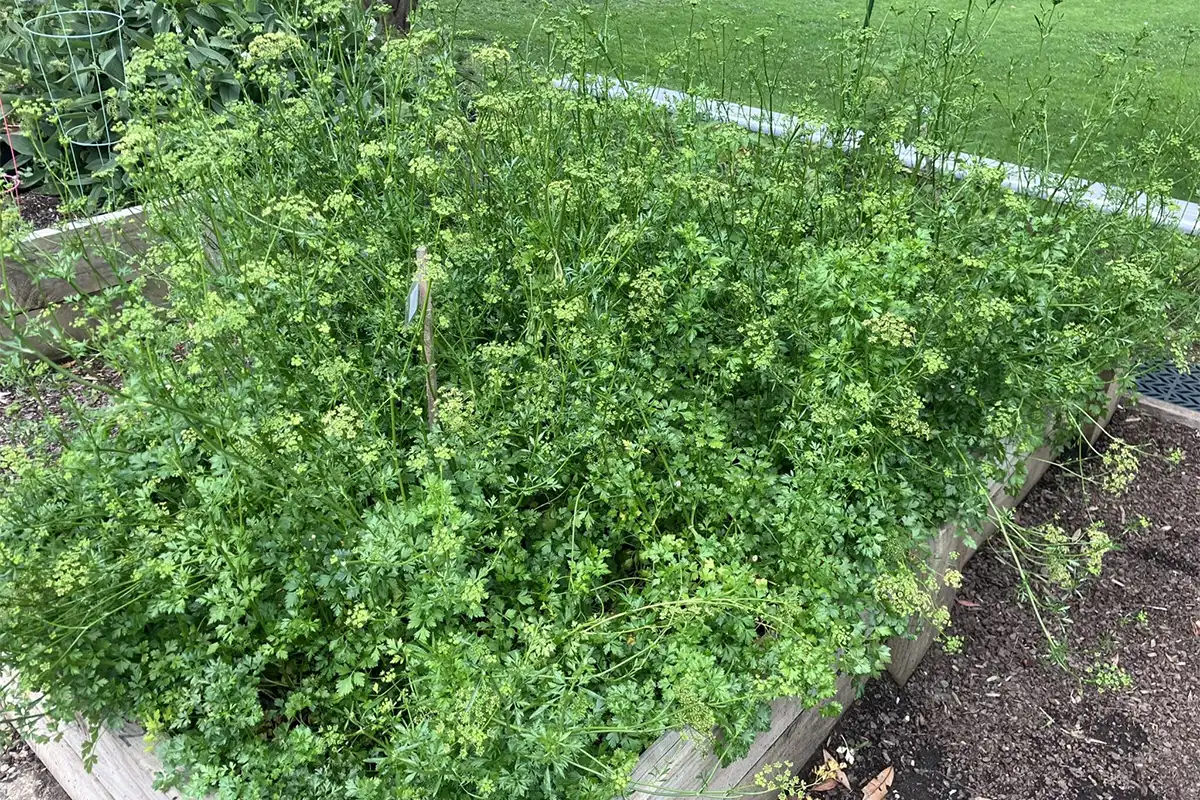
2. Parsley and asparagus
- How parsley helps asparagus: Parsley pulls in the good bugs that keep beetles and aphids off asparagus.
- How asparagus helps parsley: Asparagus stands tall with its feathery fronds, giving parsley a bit of shade and a cooler spot to thrive during hot days.
Spacing: Plant parsley about 25 cm from the asparagus crowns. Close but not crowded near the base.
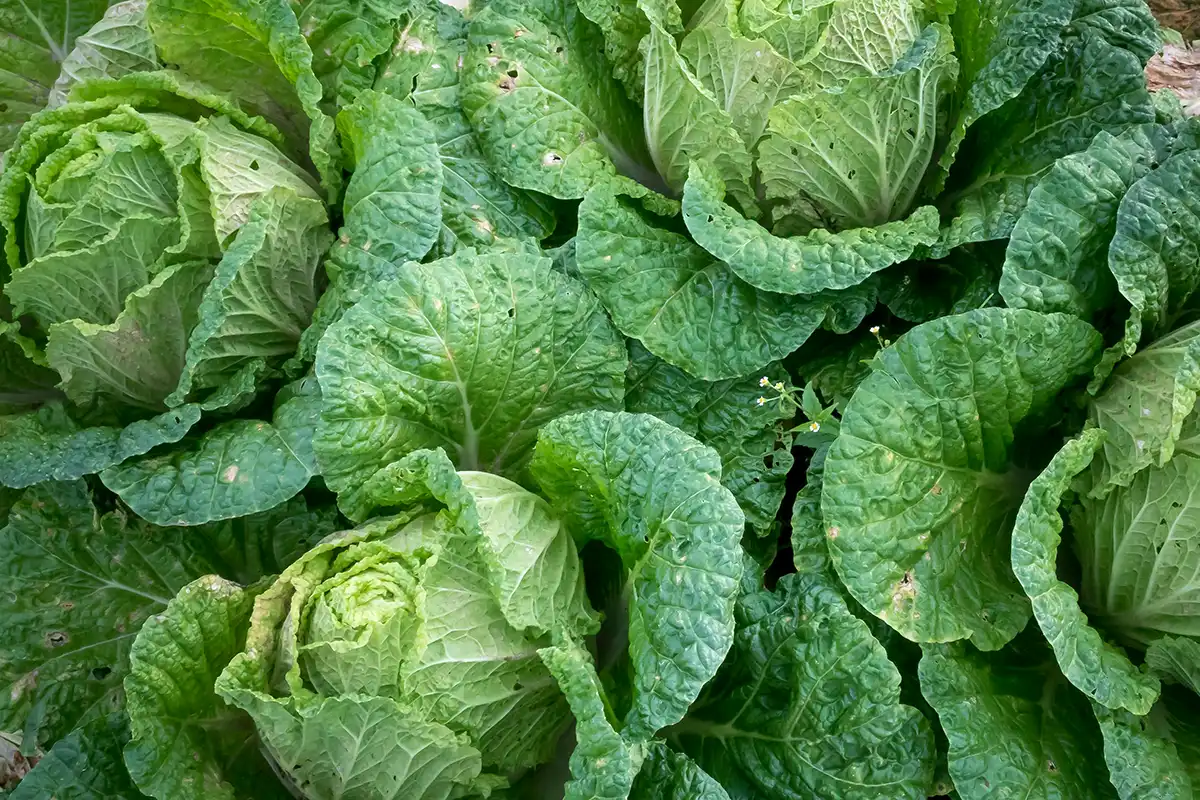
3. Mint and cabbage
- How mint helps cabbage: Mint’s powerful scent keeps pesky cabbage moths and flea beetles away.
- How cabbage helps mint: Cabbage’s big leaves create a cool, shady spot that mint’s thirsty roots love.
Spacing: Keep mint contained—either in its own pot or with a sunken barrier—then pop it next to cabbage (but not in the same bed) to stop it taking over.
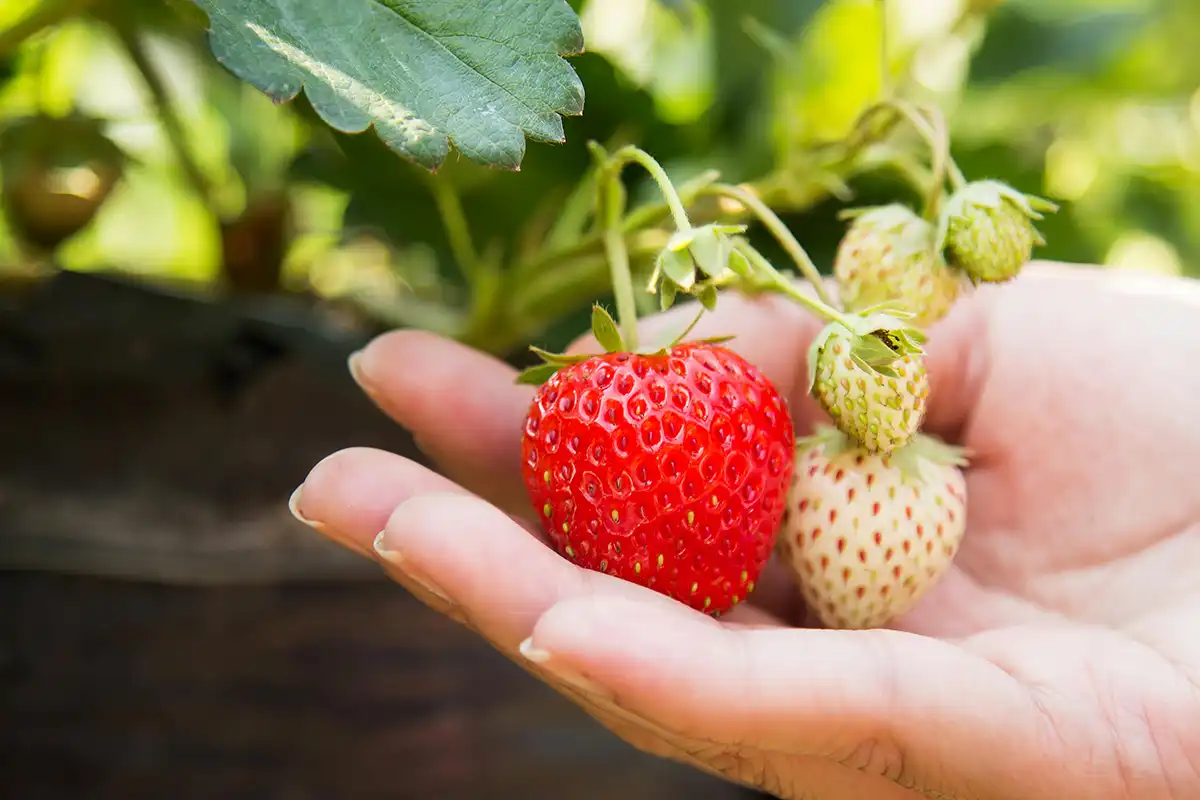
4. Chives and strawberries
- How chives help strawberries: Chives repel fungal diseases like grey mould and pests like spider mites, and can make the berries more delicious!
- How strawberries help chives: Strawberry blooms bring in buzzing pollinators, helping chives bloom and set seed.
Spacing: Plant chives 15–20 cm from strawberry plants, spacing chives in clumps to avoid overcrowding runners.
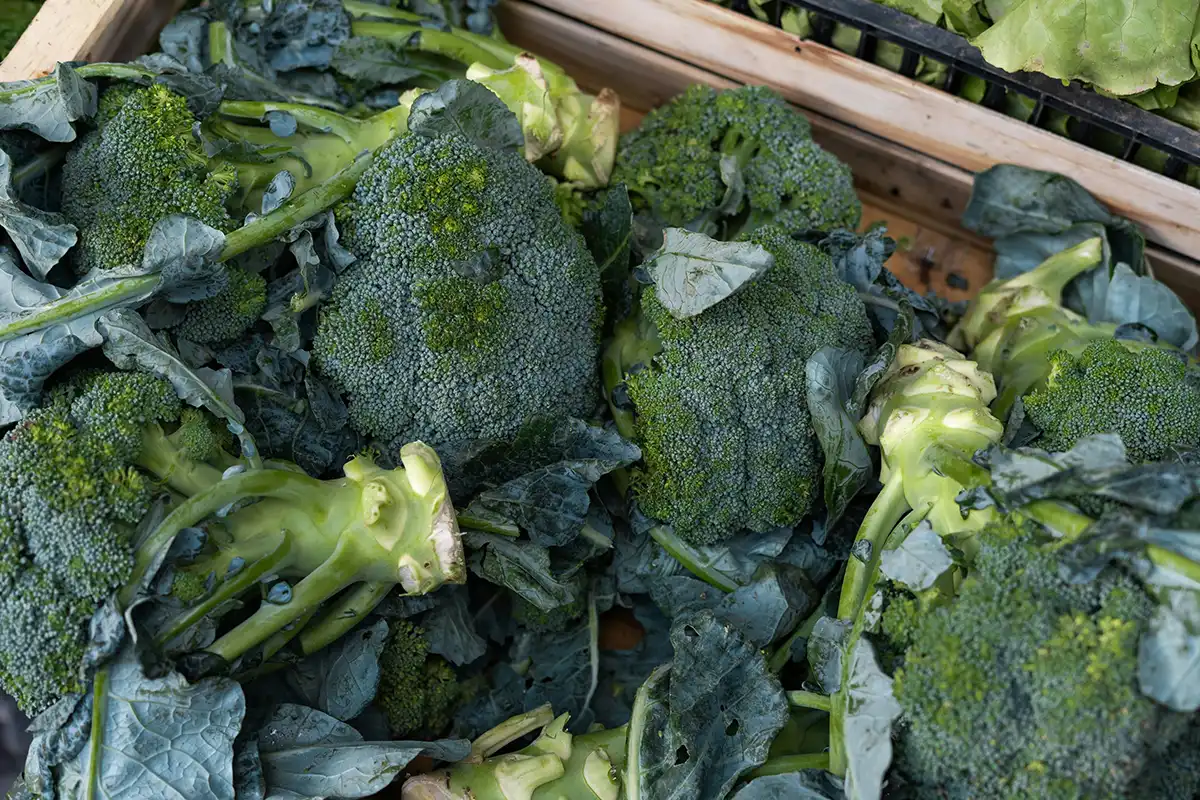
5. Dill and broccoli
- How dill helps broccoli: Dill brings in the good guys (ladybirds, wasps), that munch on caterpillars and aphids before they can snack on your stems.
- How broccoli helps dill: Broccoli’s big leafy greens give dill a bit of shelter from wind and harsh sun, so it can shoot up strong without drying out.
Spacing: Dill can be 30–40 cm from broccoli, allowing space for dill to flower without fighting for root space.
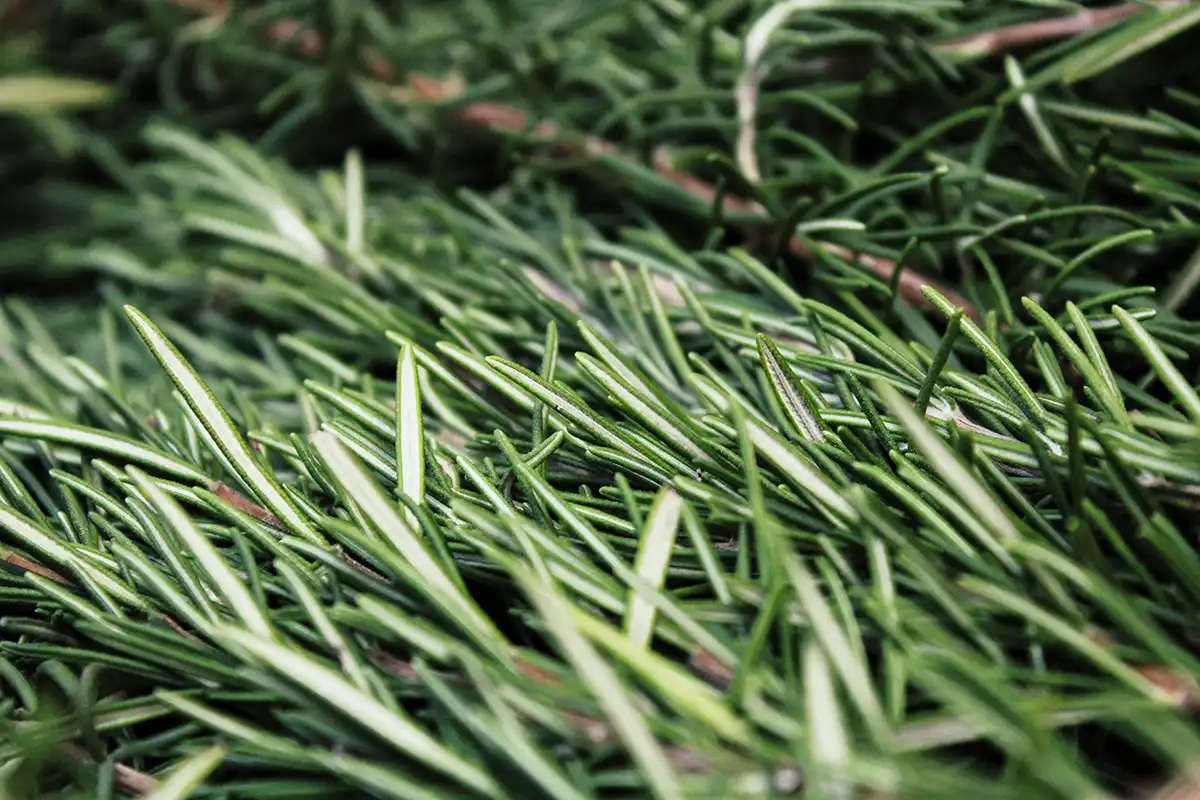
6. Rosemary and bush beans
- How rosemary helps beans: Rosemary puts off bean beetles and aphids with its intense aroma.
- How beans help rosemary: Beans boost soil health by locking in nitrogen, giving rosemary a nutrient kick in poorer ground.
Spacing: Give each plant at least 30-40 cm of space. Rosemary is a fan of airflow and shouldn’t be crowded.
See also: Winter gardening tips: what to do and what to grow
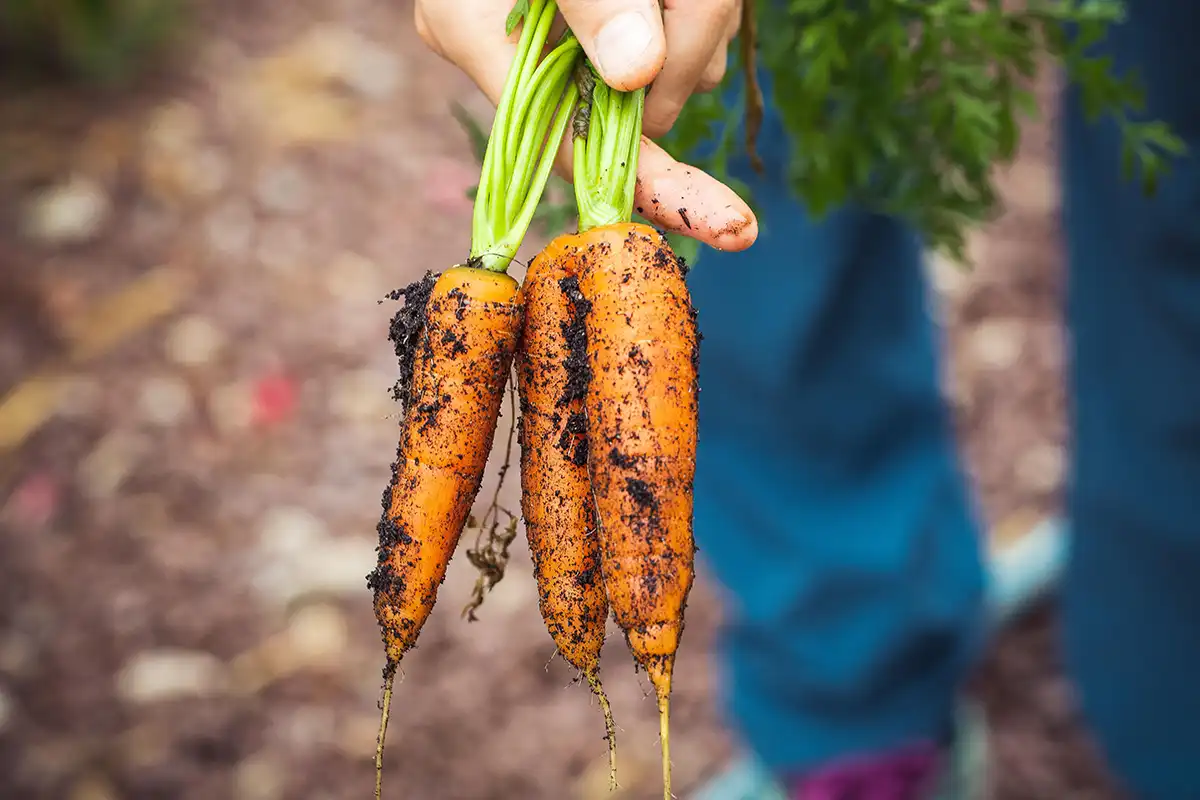
7. Sage and carrots
- How sage helps carrots: Sage masks the scent of carrot tops, confusing carrot flies. It’s a great carrot companion plant!
- How carrots help sage: The leafy tops of carrots provide shade that keeps soil moist and cool, especially helpful in dry areas.
Spacing: Sage likes to hang about 20–30 cm away from carrots. Give it room to spread out and show off its leafy best.
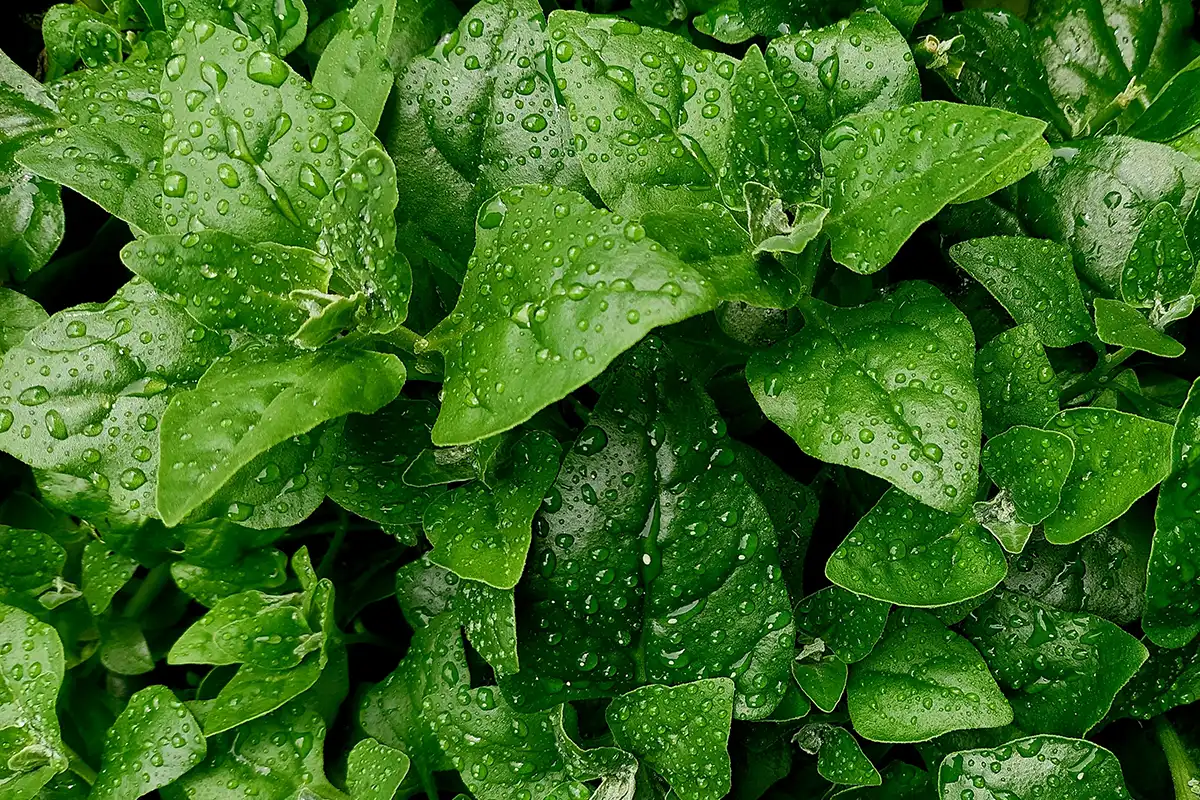
8. Coriander and spinach
- How coriander helps spinach: Coriander brings in hoverflies and parasitic wasps that snack on aphids, giving your leafy greens some solid pest protection.
- How spinach helps coriander: Spinach’s thick leaves throw shade over the soil, keeping coriander roots cool and slowing down bolting so you get more time to enjoy fresh herbs.
Spacing: Plant them 15–20 cm apart. They’re happy close buddies, especially when it’s cool outside.
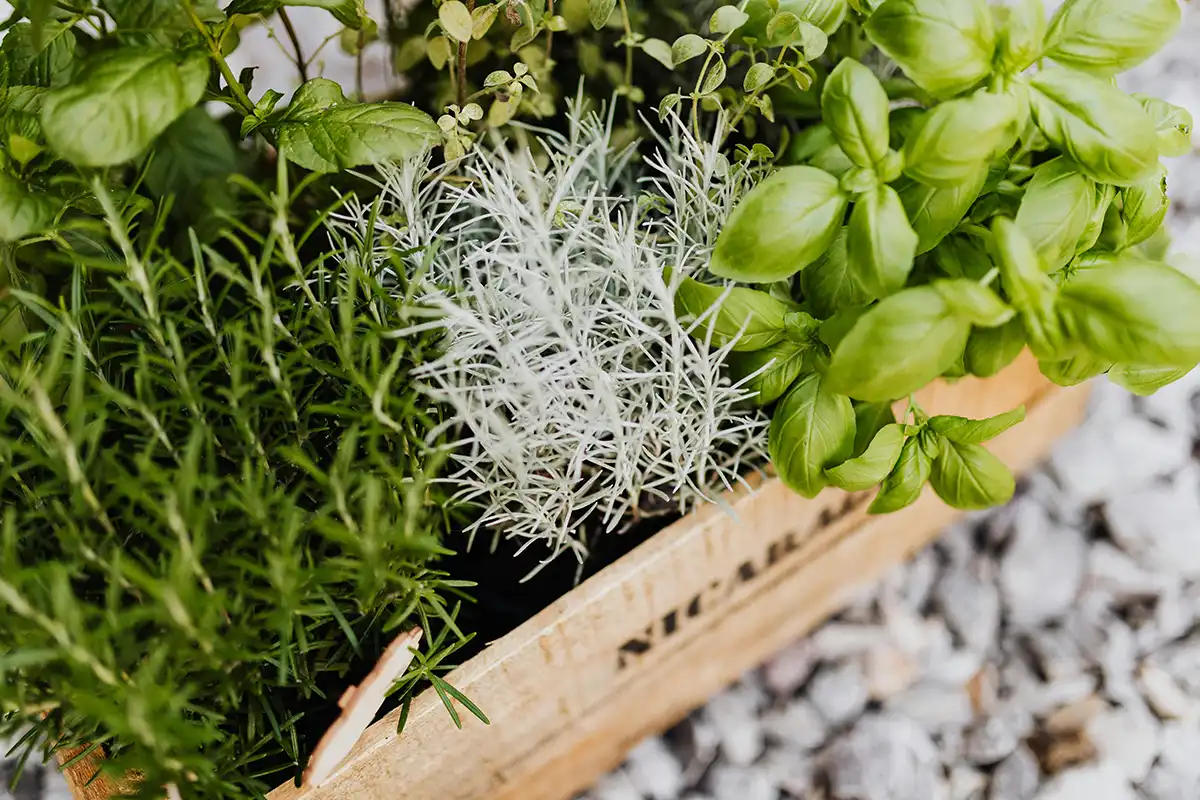
9. Thyme and cabbage
- How thyme helps cabbage: Thyme keeps cabbage loopers and moths at bay when planted as a border, thanks to those punchy aromatic oils.
- How cabbage helps thyme: Honestly, not much. Thyme prefers to hang out on the edge where it gets full sun and stays nice and dry.
Spacing: Plant thyme 20–25 cm from cabbage, letting it spread out without getting smothered.
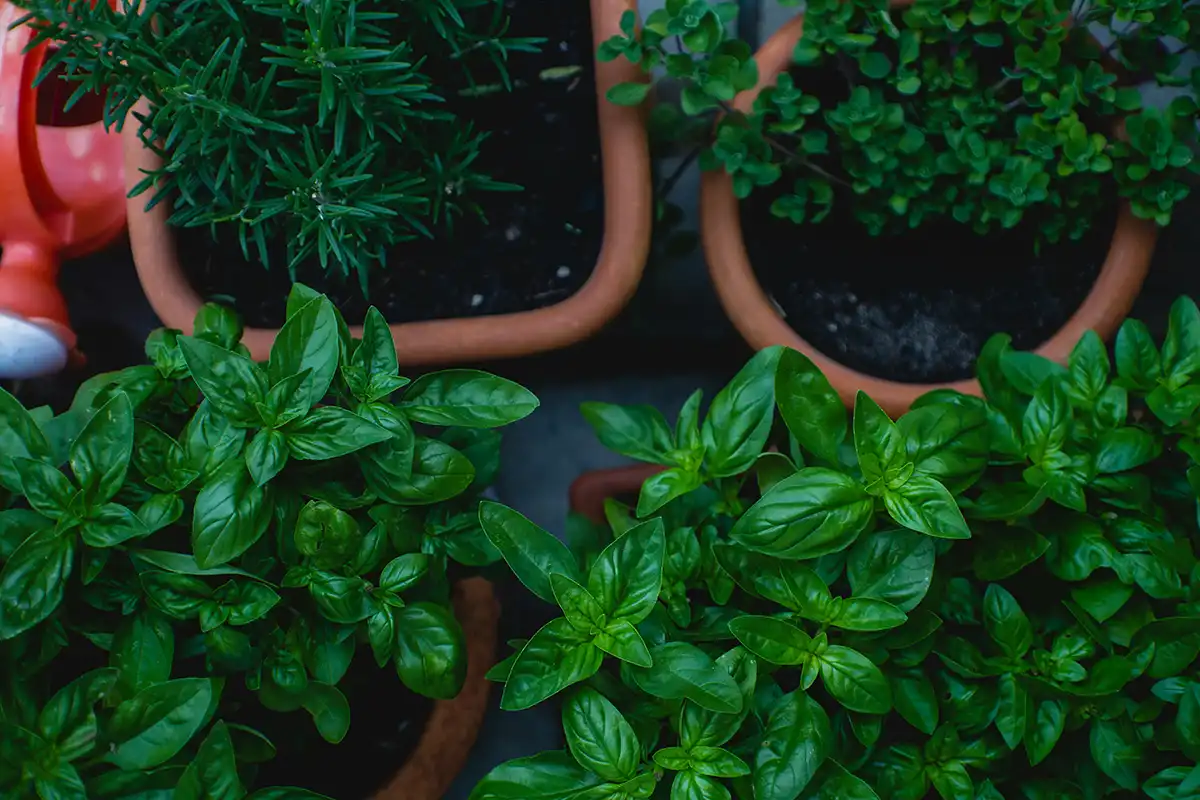
10. Chamomile and basil
- How chamomile helps basil: Chamomile gives basil a flavour boost and pumps up its oils, plus attracts the good bugs that keep pests in check.
- How basil helps chamomile: Both grow well in similar conditions. Basil gets a little help from chamomile’s natural antifungal powers in the soil.
Spacing: Plant about 20 cm apart in well-drained soil. Chamomile’s fine roots play nice and don’t hog the space!
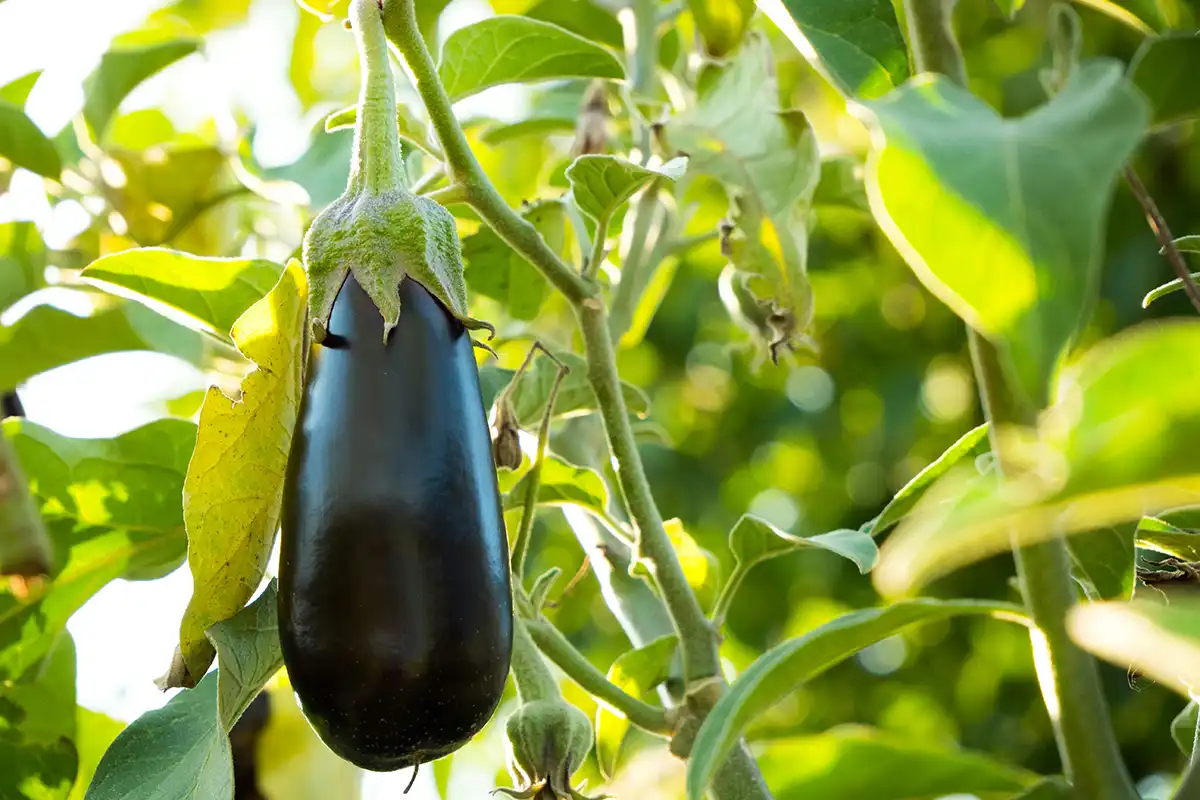
11. Tarragon and eggplant
- How tarragon helps eggplant: Tarragon’s strong scent acts like a bodyguard, keeping some pests away and giving eggplant a health boost.
- How eggplant helps tarragon: Not much love back here! Too much shade or dampness can stress tarragon. It’s best to plant this slender herb around the edge where it gets full sun.
Spacing: Give these two 30–40 cm of breathing room. Eggplant’s leaves like to spread out.
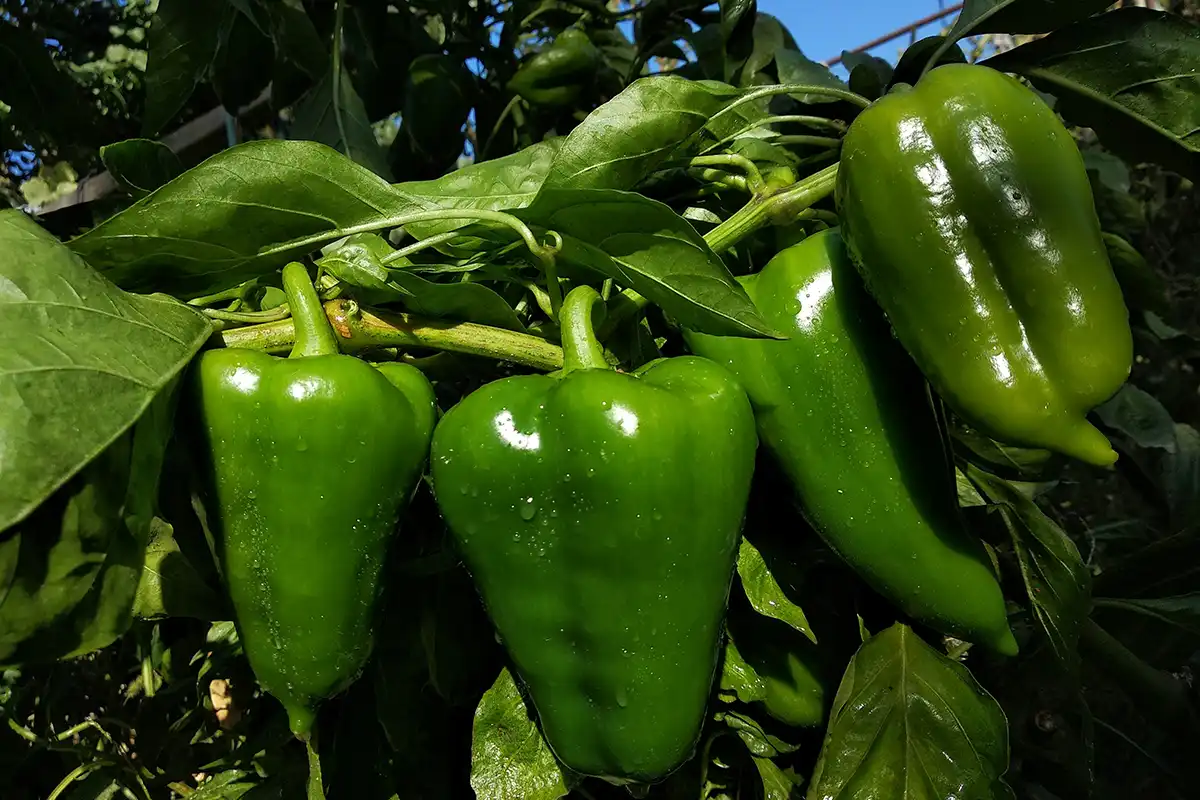
12. Oregano and capsicum
- How oregano helps capsicum: Oregano spreads out as a handy living mulch to keep weeds down. Plus, its strong scent helps keep sap-sucking pests like aphids at bay.
- How capsicum helps oregano: Both love full sun and well-drained soil, making them the perfect low-and-high combo that plays nice without crowding each other.
Spacing: Give oregano about 20–25 cm from capsicum to let it sprawl and do its thing. Just don’t let it smother the capsicum’s base.
On top of these 12, there are plenty of other herb and edible plant pairings.
For example, sweetcorn is great with lots of different herbs, from parsley and basil to dill and coriander. Cucumber companion plants include herbs like dill and oregano, which offer pest-repelling benefits while enjoying a little shade from the cucumber’s broad leaves.
See also: Sow, grow, harvest! Top vegetables to plant in spring
Prepping and maintaining the perfect combo bed
Before you start planting, take time to set your veggie garden up for success. Good herb combos rely on sweet planning, especially when you’re mixing different plant species and varieties with various needs.
Here’s a quick Jack guide on how to get it right:
Step 1: Pick the best containers and/or garden beds
Choose the right spot and container for your herb and vegie combos:
- Use raised garden beds, planter boxes or deep pots to give roots plenty of room to grow.
- When planting in-ground, separate zones based on water needs. Group moisture-loving herbs and vegies separately from drought-tolerant ones.
- Always plant aggressive spreaders, such as mint, in their own pot or a contained space to prevent them from hogging the bed!
Here are some great herb planter options from our Garden Up range:
See also: Jack’s no-fuss guide to container gardening for newbies
Step 2: Make sure they’re sitting in the best spot
Herbs and their bestie vegies need the right balance of sun, airflow and protection.
- Place beds or pots in areas that get morning to midday sun, with afternoon shade in hotter zones.
- Avoid placing herbs under eaves or walls that reflect heat unless you’re growing tough varieties like rosemary.
- Ensure good air circulation to reduce nasty fungal issues. Yuck!
Step 3: Mix the best soil for combo growing
For mixed beds, use a high-quality, well-draining potting mix with added compost.
- Add perlite or sand to improve drainage for Mediterranean herbs, such as oregano and thyme.
- Mix in organic compost for leafy, moisture-loving herbs like basil or parsley.
- Aim for a pH between 6.0 and 7.0, which suits most cook-friendly herbs.
Step 4: Mulch and add any plant support
Mulch tidies up your garden. It’s also a big help for both herbs and vegies sharing the same bed. A light layer of sugarcane mulch, pea straw, or fine bark can:
- Keep the whole bed nicely hydrated, especially for thirsty fruiting veg like toms and capsicums, plus herbs that love a drink, such as basil and parsley.
- Block weeds that play fisticuffs for nutrients with both herbs and vegetables.
- Regulate soil temperature, especially during hot Aussie and NZ summers when root systems are stressed out.
Keep mulch a few centimetres clear of herb stems to avoid rot, especially for those soft-stemmed herbs like coriander and mint.
Supporting and pruning
Use small stakes, tomato cages or soft ties to support tall, top-heavy or climbing plants, including herbs such as dill and basil, and vegies like tomatoes and eggplants.
Pruning helps maintain balance in a shared space:
- Pinch off flower heads on leafy herbs like basil or coriander to keep them producing
- Trim for airflow and shape, so herbs don’t block light or airflow from your vegies
- Control spreaders (like mint or oregano) so they don’t crowd out slower-growing herbs or shallow-rooted veg
See also: Your sweet guide to tomato cages and stakes.
Step 5: Watering and pruning your combo garden
When herbs share space with vegies, your watering routine needs to strike a balance. Most vegies, such as toms, capsicum and eggplant, need consistent, deep watering to support fruit production. Some herbs are happy with that, while others like it drier.
Here’s a basic guide:
- Moisture-loving herbs (basil, parsley, coriander, mint) pair well with vegies that need regular watering. These groups can be watered deeply every 1–2 days during hot weather.
- Drought-tolerant herbs (rosemary, thyme, oregano, sage) don’t like wet feet. They may suffer from root rot if watered too often. If you want them near thirstier vegies, grow them in a slightly raised section or separate container nearby and water less often.
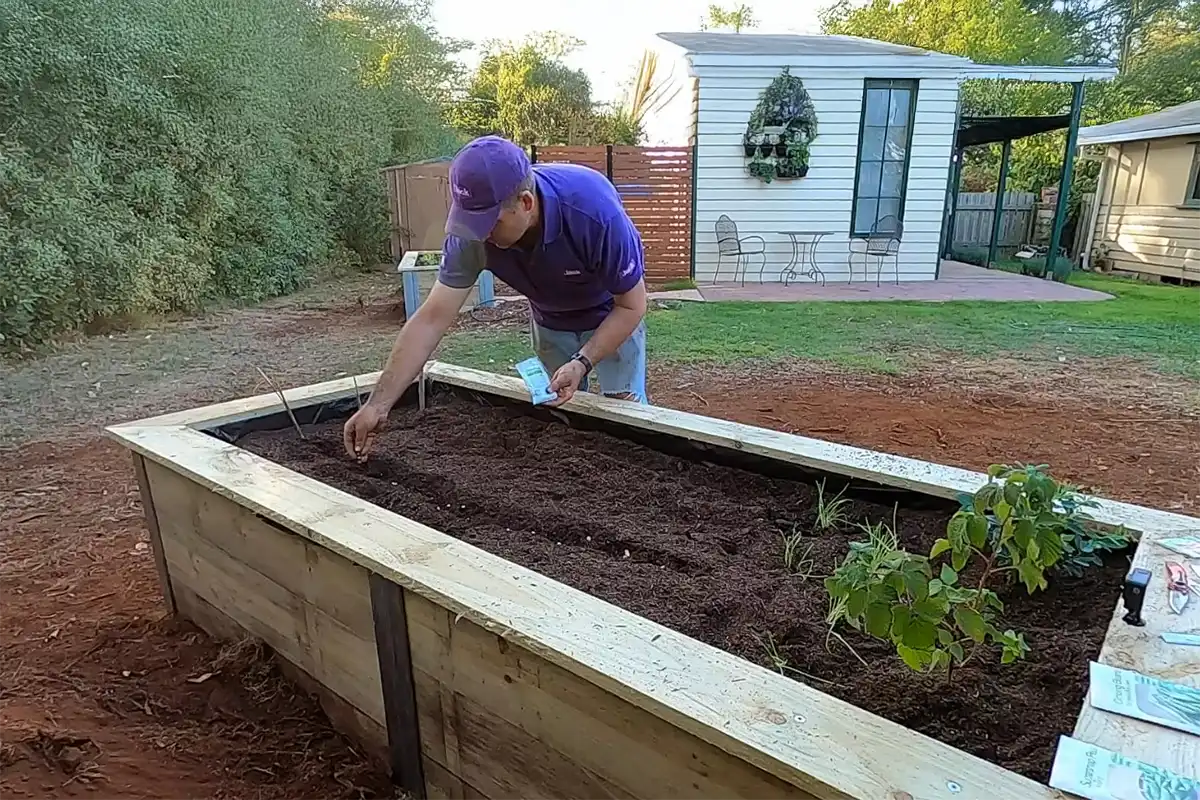
Common companion planting mistakes to avoid
Now we’ve covered what to do when it comes to companion planting herbs, here are a few what-not-tos:
- Overcrowding your plantlings – Planting herbs and vegies too close can lead to stunted growth, poor airflow and a higher risk of disease. Give each plant enough space to breathe and grow. Follow our Jack recommended spacing guidelines to keep your garden healthy.
- Mixing water lovers with dry dudes – Mixing water-loving plants with drought-tolerant ones often results in wilting or root rot. Group plants by their watering needs or use separate containers to ensure everyone gets just the right amount of moisture.
- Skipping yearly crop rotation – Growing the same herbs or vegies in the same spot year after year can sap soil health nutrients and pest buildup. Rotate crops each year and mix in soil-enriching plants like legumes to keep your garden buzzing with life—and watch your plants thrive, season after season!
Herb companion planting FAQs
Just in case we haven’t covered everything already, here are a few common questions about companion planting with herbs that might be helpful.
Q: What is the best distance between companion herbs?
A: Most herbs and companion vegies like a bit of space. Aim for 20–30 cm between plants, depending on how big they get. Give fast-spreaders like mint extra space—or their own pot—so they don’t crowd out the others.
Q: Can I mix more than two herbs in one bed?
A: Yep! Just group herbs and companion plants with similar needs, such as sun, water and soil preferences, and you can mix three, four or even more.
Q: Which herbs should never grow together?
A: Some herbs don’t play nice. Fennel is a bit of a loner. It releases compounds that can stunt other herbs. Mint is lovely, but a space hog, so give it its own pot. And don’t pair moisture-lovers like basil with dry guys like rosemary. They’ll argue over watering!
Q: How often should I rotate my herbs?
A: Most herbs can stay put for a couple of years, but it’s a good idea to rotate once a year if they’re sharing soil with vegies. It keeps the soil balanced, deters pests and gives your herbs a fresh start.
Q: Do I need special soil or fertiliser?
A: Nope, not really. Just free-draining, good-quality soil with compost mixed in. Aromatic herbs don’t need much feeding, but a light sprinkle of organic fertiliser every few months helps keep them lush and leafy and you’ll vegies will love it. But go easy. Too much can make them leggy or flavourless!
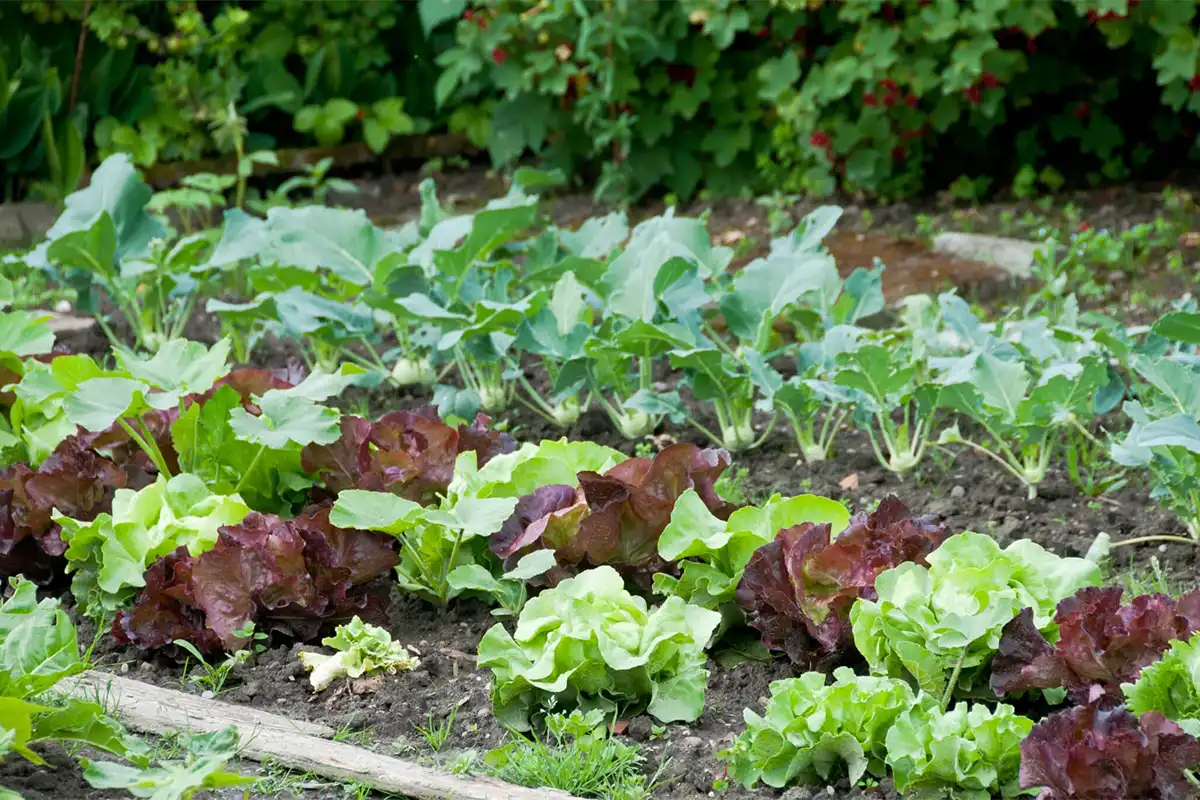
Get companion planting this weekend!
Companion gardening for herbs is a breeze once you know the ropes, and now you do!
The next step? Head to your local Jack supplier and garden centre to pick up your raised beds or containers, as well as your herbs, vegies and other items.
Set your herbs up with their perfect companions? Why not share some snaps of your vegetable garden on socials, tagging @meetdiyjack? We’d love to see your green thumb skills and might even give you a shout-out!